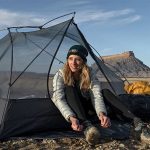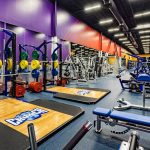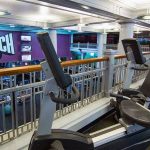At first glance the merger and acquisition deals in 2004 did not appear to be as large or as plentiful as in 2003, but it soon becomes apparent that the deals this past year may turn out to be more significant in the long run.
On the surface, Dicks Sporting Goods acquisition of Galyans wasnt seen as the blockbuster deal that was the TSA/Gart merger of 2003, and Nikes acquisition of Starter in 2004 wasnt seen as big as their deal to acquire Converse in the prior year. But the Galyans deal may prove to be a bigger deal if Dicks is able to integrate the Galyans business quickly and rapidly expand their operating prowess to the West sooner than expected. The move makes Dicks a far bigger threat to TSA now as they move into their backyard out West while still maintaining growth plans for the Northeast and South. For Nike Inc., the $43 million Starter deal gives them a foothold in a channel and with a retail powerhouse where few other brands dare to tread.
Wal-Mart isnt a footwear threat to the athletic specialty and sporting goods retailers until they develop real brand strength in athletic footwear. They can now create that threat through Starter and the best athletic footwear development company in the world. This deal alone gives Nike the single best opportunity to develop another mega brand — and theyll do it with one retailer. Everyone knows what happens when the two biggest guys join forces in a common goal. All other deals in the last two years may pale in comparison.
With $1.7 billion in cash burning a hole in Knights pocket, the industry should expect to see another blockbuster deal before this year is out.
The other major deal of the year saw Foot Locker Inc. expand its footprint in the mall after winning out over arch-rival The Finish Line with a $225 million bid for 350+ Footaction stores put on the auction block in the Footstar, Inc. bankruptcy. FL will keep the Footaction name intact, whereas FINL was expected to convert stores that did not overlap into Finish Line stores. The deal expanded Foot Lockers store count by nearly 10% and gives it a new format where they can sell more apparel and marquee footwear.
The year also saw continued acquisitions by some of the serial consolidators and saw other companies emerge to make multiple moves of their own.
K2 Inc. made the blockbuster deal of the year in the outdoor/winter sports market, snatching up Marmot, Marker, and Volkl in mid-year deals that make it the largest ski company in the world and providing the company with a solid base to develop apparel for a number of their brands. KTO further established that platform by moving Steve Crisafulli, former CEO of Marmot, to oversee all apparel operations for the corporation. The Marker and Volkl deals now give K2 a solid foothold in Europe where they can expand their K2 mid-range ski and snowboard business. K2 Inc. found one other deal late in the year, picking up Miken to give them yet another arrow in the Rawlings quiver. The company ended the year with one piece missing from the equation, a solid footwear company to service all KTO brands. That may well be the first deal of the new year.
VF Corporation not only went and found new brands to roll into its Outdoor Coalition business, it moved to consolidate that business as well. The company also expanded their European presence with the acquisition of the Italy-based Napapijri in April, then expanded that footprint with the addition of the Kipling brand in June. But the biggest deal of the year for the company was clearly the $396 million acquisition of Vans Inc. in June that gives the company a solid footwear base. The Schoenfelds quickly departed the business and former Reebok exec and Vans CMO Steve Murray was named president of the company. VFC continued to fine-tune the Outdoor Coalition operation throughout the year, promoting Mike Egeck, president of The North Face, to president of the ODC for the Americas, essentially rolling all brands under his control. That control was further strengthened last in the year as VFC made the move to consolidate the Jansport business near TNFs headquarters in San Leandro, while the Eastpak business rolled under the Vans operation. The Outdoor Coalition accounted for more than 69% of the total sales gain for VF Corporation in the last fiscal quarter.
Russell Corporation moved back into the acquisition game after taking a short breather to digest its previous acquisitions and re-organize the structure of its core Russell Athletic business. After adding the American Athletic Inc. and Huffy Sports Company to the Spalding mix over the summer, Russell quickly claimed the mantle as largest basketball equipment maker in the world. The company then split Russell Athletic back out into three divisions, naming Matt Mirchin president of retail and bookstores, while Mike Thorne, who was VP of sales for Spalding, takes on the team business for Russell. Cheryl Barre remains president of the womens business.
To finish off what was seen as a turnaround year, Russell moved into footwear for the first time in December, closing on the acquisition of Brooks Sports in a deal worth approximately $115 million.
The industry also saw further consolidation in the helmet and protective gear market after Fenway Partners, which owns the Riddell Sports business, in August acquired Bell Sports, which owns the Bell and Giro brands, in a deal worth approximately $240 million that saw the two helmet companies merged into Bell Sports. The surviving entity expanded their scope in late December, acquiring Sports Instruments.
Forzani Group Ltd. became an unlikely player in the acquisition game last year as well as they moved to diversify their retail business and establish a wholesale business. After hinting at interest in the U.S. market in 2003, Canadas largest sporting goods retailer stayed north of the border in 2004, closing on the acquisition of Nevada Bobs Canada in December.
The retailer also sought to strengthen its close-out offerings and get into the wholesale end of the business, partnering with former Gen-X Sports execs Jamie Salter and Ken Finklestein to acquire the Gen-X close-out business from Huffy Corporation in March. The group then entered the branded footwear business, acquiring the rights of the Savier brand in August.
Salter and Finkestein werent through buying back there former company from Huffy and announced a deal in December that enabled them to re-acquire their in-line skate and snowboard brands in a Huffy Corp. bankruptcy auction.
Collegiate Pacific, after a year of making noise about acquisitions, made its moves to consolidate control in the team dealer business, inking deals in 2004 worth more than $28 million. The company started the year by acquiring Tomark Sports for $5.25 million, giving it a West Coast foothold in institutional sales. Collegiate scooped up Midwest-based Kesslers Sports Shop in April for $12.75 million and added Mid-Atlantic/Southeast team dealer Dixie Sporting Goods in June in a deal worth $6 million plus incentives. BOO closed the year with a $3 million deal to acquire Orlando Team Sports.
Elsewhere in team sports, Cramer Products acquired Cosom Sporting Goods, an institutional supplier of sporting goods. There was also some consolidation in accessories as Penguin acquired M. Nathan.
The year also saw Quiksilver Inc., the global surf lifestyle powerhouse, enter the skate market with its March deal to acquire DC Shoes for $87 million. The deal is already starting to bear fruit as DC starts to work on Quiksilver and Roxy footwear and snowboard boots and Quiksilver helps DC develop a better platform for apparel. Look for ZQK to broaden their brand stable even more in 2005, possibly a hardgoods brand.
Genescos February acquisition of Hat World Corporation, parent company of the Lids and Hat World retail businesses, was another big deal of the year and had an immediate impact of the fortunes on the new parent. The $165 million deal gave GCO its first business outside of the footwear world and helped them quickly with both top-line and bottom-line results. The company expanded its headwear footprint in July with the acquisition of Canada-based Cap Connection Ltd. in a deal worth CN$2 million and moved into Asia with a deal with Mainland Headwear to license to open and operate more than 200 stores in Hong Kong and China.
In perhaps the most ill-timed move of the year, Reebok International acquired The Hockey Company in April for $329 million. The deal came on the eve of the reality that the NHL would lock out players for the 2004/2005 season, effectively killing sales of NHL licensed apparel, the one piece of the THC business that fit with Reeboks model. One upside here is that THC is masking top-line sales issues for the Reebok brand.
Perhaps responding to the Reebok/THC deal, ITECH and Mission Hockey in May agreed to merge operations, keeping operations in both Canada and Southern California.
The other bad timing award may go to Kellwood Corp., owner of American Recreation, as they looked to diversify their apparel brands into a younger, hipper demographic with the acquisition of Phat Farm. Conversely, the perfect timing award goes to Russell Simmons. Kellwood did get some nice bottom-line lift from the $140 million deal that closed in February, but the long-term prospects appear to be questionable as the retail market signals the beginning of the end for hip-hop brands. We guess theres always a down-market strategy for everything.
In outdoor and winter sports, Spyder was acquired by a private equity firm Apax partners in an August deal worth $100 million. Burton picked up four lesser snowboard labels in its summer acquisition of Four Star Distribution, which owned the Forum, Jeenyus, Foursquare and Special Blend brands. And Bain Capital saw a nice return on its investment in Jack Wolfskin, reportedly selling the brand off in December for approximately $200 million after buying the brand from Johnson Outdoors in 2002 for less than $63 million. Gregory Moutain was picked up in November by security products firm Armor Holdings as part of its deal to acquire Gregory parent Bianchi International. At retail, The Sportsmans Guide moved into golf with its acquisition of Golf Warehouse.
The other outdoor deals throughout the year included a management buy-out at Eastern Mountain Sports and other footwear deals included Rocky Shoes & Boots December deal to acquire EJ Footwear for nearly $100 million and Phoenix Footwears mid-year acquisition of Altama footwear.















